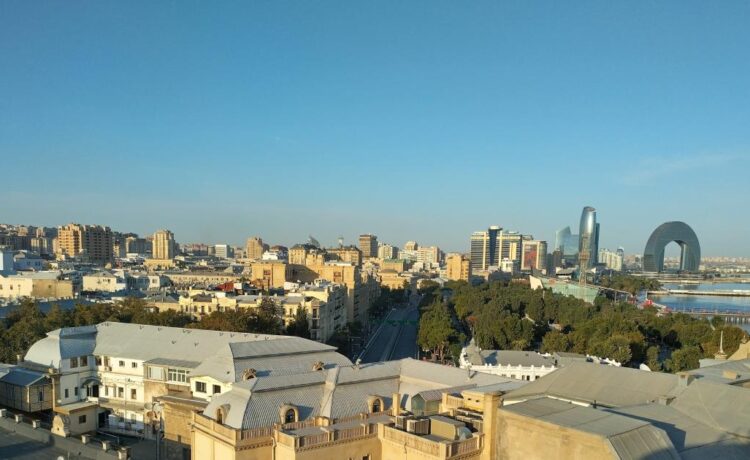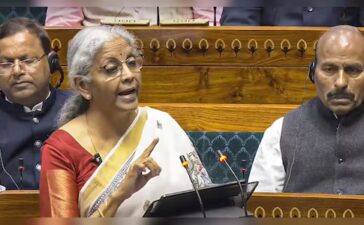Co-authored with Charlene Watson (ODI), David Ryfisch (Germanwatch), and Eleonora Cogo (ECCO)
At COP29 this November governments are set to agree a new collective quantified goal (NCQG) for climate finance, as mandated by the 2015 decision adopting the Paris Agreement. Climate finance was part of the grand bargain that underpinned the Paris Agreement: that all countries would need to do more to tackle the climate crisis, but that poorer and more vulnerable countries who have done the least to cause the problem and are hit first and worst by impacts need support from richer countries to do so. We are releasing a new tool to assess different levers available to scale up international finance and the impact on the potential size of the NCQG.
The new climate finance goal will replace the current goal for developed countries to mobilize $100 billion per year for developing countries between 2020 and 2025. With less than a month to go until COP29 begins, intergovernmental negotiations have moved into the political phase, and a key question still to be resolved is: how big should the new goal be?
The mandate for the new goal requires it to take into account the needs and priorities of developing countries. The quantity and granularity of climate finance needs assessments have grown substantially in recent years. While there are important variations in their methodologies and scopes, most studies find that the overall investment needs for developing countries to implement the Paris Agreement are now in the trillions of dollars per year.
There has been significant discussion about the structure of the goal, including the idea that the goal might have multiple layers. This could capture both the trillions of dollars in overall climate investment needed and, as a subset of this, the amount of international support — public finance provided and private finance mobilized — for developing countries (see figure 1).
In this piece, we focus on the international support element — the red and green circles in the diagram. Recent submissions by some developing countries, as well as expert studies, have weighed in on the level of international climate finance that might be needed by developing countries:
- Government submissions to the UNFCCC:
- The African Group of Negotiators called for a mobilization goal of $1.3 trillion per year by 2030.
- The Arab Group called for a mobilization goal of $1.1 trillion per year from 2025–2029, of which $441 billion would be public finance provided.
- The Like-Minded Developing Countries group called for a mobilization goal of at least $1 trillion per year from 2025–2030.
- Developed countries, including the US and European Union, have recognized that developing countries’ total climate investment needs are in the trillions, but haven’t specified a number for the international support goal.
- The UNFCCC’s Standing Committee on Finance’s Second Needs Determination Report assessed the climate finance needs articulated in Nationally Determined Contributions (NDCs). A total of 98 developing countries included costed needs in their NDCs, which annualized across different time frames ending by 2030 give a range of $455–584 billion per year (though these needs may not be met solely from international flows).
- The Independent High-Level Expert Group on Climate Finance, established by the COP26 and COP27 Presidencies, together with the UN Climate Change High-Level Champions, estimates that of the $2.4 trillion per year by 2030 that developing countries (excluding China) will need in climate investment, $1 trillion should come from international sources, and of this, $400–500 billion should come from public finance.
At a time when governments in developed countries are cutting spending in many areas at home and abroad, these are daunting figures. Yet there is also no denying the urgent need for financial support to accelerate the transition to a net zero economy and to help vulnerable communities cope with the mounting impacts of climate change. Failure to bring all countries along on this transition will have ramifications for global economic stability and security.
In this piece, we project how much current climate finance flows are likely to grow in a business-as-usual scenario without any additional effort beyond current commitments. This falls well below the ambition needed to keep the world on track to achieve the Paris Agreement goals, so we then assess potential pathways to scale up international climate finance from this baseline toward what is needed to address the scale of the climate crisis.
Current climate finance flows
What is the current level of international climate finance mobilized for the $100 billion climate finance goal? Only public climate finance from developed to developing countries and private climate finance mobilized by developed countries going to developing countries are counted towards this goal (the developed country portion of the red and green circles in figure 1 above). The $100 billion goal was not met in 2020 and 2021, with developed countries falling short by $16.7 billion and $10.4 billion, respectively, according to analysis by the Organization for Economic Co-operation and Development (OECD). Based on the same OECD figures, developed countries did meet the goal in 2022, and this is the year for which the latest figures are available:
- Bilateral finance: $43.4 billion. Finance provided by developed countries’ institutions, including bilateral aid agencies and development banks. This figure includes $41 billion of bilateral finance and $2.4 billion of export credits provided by developed countries’ official export credit agencies.
- Multilateral climate funds (MCFs): $3.7 billion (the OECD adjusts these figures to only count developed countries’ share of finance from these institutions; a further $0.4 billion in MCF financing came from developing countries). Specialist funds focused on climate that pool resources from and are collectively governed by multiple countries. Many MCFs allow developing countries to directly access climate finance and provide more grants and concessional lending than available from other channels.
- Multilateral development banks (MDBs): $46.9 billion (the OECD adjusts these figures to only count developed countries’ share of finance from these institutions; a further $19.2 billion in MDB climate finance was attributable to developing countries). MDBs are international institutions that pool resources from and are collectively governed by multiple countries. MDBs use their government capital and strong credit ratings to raise additional finance from global capital markets, and due to this their financing is predominantly loan-based.
- Private finance mobilized by public climate finance: $21.9 billion ($9.2 billion by bilateral public finance and $12.7 billion by developed countries’ share of multilateral public finance). Private investments that have occurred as a result of public finance provided by a developed country. This does not include private finance that flows without a direct tie to public finance.
- Total provided and mobilized: $115.9 billion in 2022.
Projecting a business-as-usual baseline
Building on the 2022 figures, we can now map out what a business-as-usual scenario might look like based on projections of how finance is likely to grow in the coming years. This baseline for 2030 accounts for existing pledges by developed countries and agreed reforms to how international finance institutions operate, but assumes no additional efforts beyond these:
- Bilateral finance: $50 billion. Many developed countries have already pledged to scale up their climate finance by 2025. The U.S. has historically been one of the biggest laggards in climate finance provision, contributing much less than the EU despite having a significantly larger economy. But in recent years the U.S. has begun to scale up its international climate finance, from $1.5 billion in 2021 to $5.8 billion in 2022 and $9.5 billion in 2023. The U.S. is on track to meet its 2024 international climate finance pledge of $11.4 billion, an increase of $5.6 billion from 2022 levels. We estimate that $1.5 billion of this $5.6 billion is contributions to multilateral climate funds, which translates to a roughly $4 billion bilateral increase from the U.S. Together with the increases in bilateral climate finance by the other 23 developed countries to meet their 2025 pledges, we project developed countries will collectively increase their bilateral finance by $6.6 billion to reach $50 billion by 2025, after which this would remain stable without new pledges.
- Multilateral climate funds: $5 billion. Developed countries’ climate finance through multilateral climate funds reached $4.4 billion per year in 2021, before dropping to $3.7 billion in 2022. With the Green Climate Fund undergoing its most successful replenishment cycle, raising $12.8 billion in pledges ($2.8 billion more than the previous pledging round), the establishment of the Fund for Responding to Loss and Damage with $679.7 million in pledges, and the Climate Investment Funds deploying a new mechanism projected to raise an additional $500 million a year from capital markets, we project that this will allow funds to scale up their annual financing to $5 billion per year. Pledges to the Adaptation Fund fell short of its $300 million fundraising target in 2023, but if countries meet the mobilization targets in future years this could further increase the total flowing through multilateral climate funds.
- Multilateral development banks: $75 billion. For the last few years, governments have been pushing MDBs to embark on a reform process that includes changing their capital adequacy rules to unlock greater lending capacity from their existing balance sheets, and setting higher targets for the share of their financing that goes towards climate. Since 2020, MDBs have seen their climate finance to developing countries grow by over $10 billion per year as they scale up their climate finance to meet higher targets they set for the post-2020 period. In 2023, MDBs’ total climate finance to developing countries rose to $88.3 billion, and using the OECD’s calculation that 70 percent of MDB financing in 2022 was attributable to developed countries, $62 billion of this would be attributable to developed countries. Based on already adopted reforms to their capital adequacy frameworks, the MDBs are projected to unlock over $35 billion per year in additional overall lending capacity. This was backed up by the credit ratings agency Fitch which released analysis confirming that MDBs can collectively increase their overall lending by $474.9 billion without risking a credit downgrade. We therefore project that developed countries’ attributed share of annual MDB climate finance will rise by at least $12.25 billion from 2023 levels by 2030 (on the assumption that, of the over $35 billion additional annual lending capacity, 50 percent will be for climate, based on the current portfolio shares of the MDBs that have currently adopted reforms, and that 70 percent of this is attributable to developed countries).
- Private finance mobilized by public interventions: $43 billion ($13 billion by bilateral public finance and $30 billion by developed countries’ share of MDB finance). To project future private finance mobilization, we use past mobilization ratios, i.e., the amount of private finance mobilized by each dollar of public finance provided. In 2022, every dollar of bilateral public finance provided mobilized 22 cents of private finance, a mobilization ratio of 1:0.22. The MDB mobilization ratio was 1:0.25 in 2022 but rose to 1:0.38 in 2023. We therefore apply a ratio of 1:0.25 to projected bilateral finance and 1:0.4 to projected MDB public finance. For simplicity, we do not include private finance mobilization by multilateral climate funds since their overall financing is relatively low and has a greater focus on adaptation, where it is more challenging to mobilize private finance.
- Total provided and mobilized: $173 billion, a $57.1 billion increase on 2022 levels, a 7 percent compound annual growth.
Levers to scale finance
With this business-as-usual scenario, we can now explore different levers available to scale up public finance. We developed a model (viewable here) which allows users to adjust various input parameters to see how this affects overall provision and mobilization in 2030 and 2035. Here are the parameters which can be adjusted:
Increasing bilateral finance
- Developed countries scaling up their contributions: 0–15 percent per year growth rate from BAU amount for the period 2025–2030 and 2030–2035. Developed countries’ bilateral finance has grown by 6.9% on average since 2013. Many developed countries committed to double their climate finance between 2015 and 2020, and then double again between 2020 and 2025. For example, the United States sought to make up for its failure to scale up climate finance between 2015 and 2020 by committing in 2021 to quadruple climate finance from 2016 levels by 2025. Using the rule of 72 we know an annual growth rate of 15 percent from 2025 would double finance by 2030; 7 percent would double by 2035. It is possible to set different growth rates for the 2025-2030 and 2030-2035 periods. At the low end, a 0 percent growth rate would imply holding the business-as-usual level of bilateral finance ($50 billion per year) constant, but not reducing this in nominal terms. New revenue raising mechanisms deployed nationally could allow bilateral finance to be scaled up more easily (see discussion on innovative sources below).
- Accounting for the efforts of other contributor countries: initial 2030 value ($5–30 billion), then 0–15% per year growth rate 2030–2035. Developed countries have pushed for the contributor base for the new goal to be expanded to include additional countries. Other countries are already contributing international climate finance voluntarily; the UNFCCC’s Standing Committee on Finance reports that bilateral climate finance from non-OECD countries to other non-OECD countries was $2.7 billion in 2022, but notes that these are likely underestimates since they are based on voluntary reporting. If a deal is reached on having other relatively wealthy and high-emitting countries contribute to the new goal, the model includes the potential to add a fixed amount to take account of their contributions by 2030, then a percentage annual growth rate between 2030 and 2035. Developed countries have argued that their ability to scale up climate finance is politically difficult to justify to domestic constituencies when other relatively wealthy and high-emitting countries are only encouraged to contribute voluntarily under the Paris Agreement, so a deal to have a wider base of contributors could allow the growth rates of developed country public finance in the model to be adjusted upwards.
Increasing contributions to multilateral climate funds
- Developed countries scaling up their contributions: 0–15 percent per year growth rate from BAU 2025–2030 and 2030–2035. Developed countries’ finance through multilateral climate funds has grown by 4.5 percent a year on average since 2013 reaching $3.7 billion in 2022.
- Accounting for the efforts of other contributor countries: initial 2030 value, then 2030–2035 0–15 percent per year growth rate. Other countries already contribute $0.4 billion per year to multilateral climate funds.
Increasing financing from multilateral development banks
- Share of overall MDB finance for climate: 40–50 percent. Most MDBs are setting portfolio share climate finance targets, a fixed percentage of their overall annual financing going to climate-related activities. Across all MDBs their overall climate finance is 45 percent of their total operations. The European Bank for Reconstruction and Development and European Investment Bank have already set 50 percent targets by 2025, the Asian Development Bank recently set a 50 percent target for 2030, and the World Bank increased its 2025 target to 45 percent. While we expect MDBs could converge towards 50 percent of their overall financing for climate, we allow users to select a lower share in the event that MDBs with lower portfolio climate finance targets grow their financing more than MDBs with higher climate finance targets.
- Proportion of MDB climate finance counted: developed countries’ attributed share only (70 percent) or all finance (100 percent). Under the $100 billion goal framework, only the share of MDB climate finance attributable to developed countries is counted, based on a methodology that takes into account their capital shares as well as callable capital. At present this is around 70 percent of overall MDB climate finance. One potential element of a deal on the contributor base could include an agreement to count the full climate finance of MDBs. Given that all governments already contribute to MDBs regardless of decisions abouts climate finance targets, this change could take place independent to any agreement on who should contribute bilateral climate finance under the new goal and could encourage governments to channel more through MDBs since a greater proportion than under BAU would be counted.
- Additional reforms and capital to increase total MDB financing headroom: none ($0) or implement the G20 Independent Expert Group Triple Agenda recommendations ($390 billion per year). In recent years, MDBs have already undertaken several reforms to boost their lending capacity. The G20-commissioned Independent Expert Group on Strengthening Multilateral Development Banks has recommended further reforms, including fully implementing the capital adequacy reforms recommended by the Independent Review of MDBs Capital Adequacy Frameworks, capital increases that will permanently boost MDBs’ lending capacities and strong replenishments of MDBs’ concessional windows, which could triple MDBs’ total annual financing for developing countries to $390 billion per year by 2030 ($90 billion in concessional financing and $300 billion in non-concessional financing). The value for overall lending capacity is then adjusted based on the selected share of overall MDB finance for climate (40-50 percent) and the proportion of MDB climate finance counted towards the goal (developed countries’ attributed share only, 70 percent, or all finance, 100 percent).
Better mobilization of private finance by public entities
- Increase mobilization ratio: 1:0–1:4 for bilateral, 1:0–1:4 for MDBs. Mobilization ratios are applied to the overall amount of public finance; while some interventions may mobilize significantly more private finance, the portfolio-wide figure takes account of the fact that some interventions (for example adaptation and loss and damage projects) may mobilize relatively little if any private finance. In 2022, the bilateral public finance mobilization ratio was 1:0.22. The MDB mobilization ratio was 1:0.25 in 2022 but rose to 1:0.38 in 2023. If public entities make changes to get better at mobilizing of private finance, the projected ratio could be increased.
Raising new, “innovative” sources of finance
- New international sources of finance: $0–500 billion in 2030 and 2035. This refers to only innovative mechanisms for raising climate finance that would be administered internationally, so less subject to domestic political changes. Potential sources include International Monetary Fund issuances and rechanneling of Special Drawing Rights, the share of proceeds going to the Adaptation Fund from the Paris Agreement’s Article 6 Crediting Mechanism, and levies on emissions from international shipping and aviation. Estimates of revenue potential from different levies vary widely, from less than ten billion to over $100 billion per year so we kept range of values wide to allow for a variety of perspectives about which mechanisms might be deployed and how much revenues might be raised. Funding from innovative sources is likely to be focused on activities such as adaptation and loss and damage that require mainly grant financing so are difficult to fund from other sources. As a result, we do not assume they will mobilize any private finance, though in reality they may help do.
- Deploying innovative sources at national level: adjust bilateral and MCF growth rates. A number of other innovative sources such as a billionaire tax and levies on fossil fuel extraction have been proposed, as well as addressing illicit financial flows. These have substantial revenue potential. Since these mechanisms are likely to be implemented at the national level, the revenues will go to national treasuries and will not necessarily be earmarked for international climate finance. Nonetheless, they could help give governments fiscal space to increase their bilateral and multilateral climate fund contributions, so could be factored into the percentage increase amounts in the bilateral and multilateral climate fund parameters of the model.
Illustrative Scenarios: potential packages of measures to scale up climate finance
By combining different assumptions about which of the above levers are pulled, it is possible to create illustrative scenarios for how climate finance could be scaled up to better take into account growing developing country needs. The table below shows four illustrative scenarios with different packages of measures that could be taken based upon different proposals that have been floated for how to scale up international climate finance. Each scenario builds on the previous one in stepwise fashion. The model allows users to experiment and create their own scenarios that map to their assumptions.
Table 1: Illustrative scenarios (all figures billion U.S. dollars)
|
Contributors→ Source/Channel↓ |
Business-as-usual 2030 | Illustrative Scenario 1: Developed countries increase | Illustrative Scenario 2: Bigger and better multilaterals | Illustrative Scenario 3: Recognizing other contributors | Illustrative Scenario 4: Harnessing innovative sources and increasing mobilization |
| Bilateral climate finance |
$50 $43.4 in 2022 +$6.6 from current pledges |
$73 in 2030 $108 in 2035 +8% annual increase |
$73 in 2030 $108 in 2035 As scenario 2 |
$91 in 2030 $142 in 2035 +10% annual increase by developed countries $10 from other contributors in 2030 and 5% annual increase 2030-35 |
$111 in 2030 $215 in 2035 +15% annual increase by developed countries $10 from other contributors in 2030 and 5% annual increase 2030-35 |
| Multilateral climate funds |
$5 $3.7 in 2022 +$1.3 from current pledges and reforms |
$7 in 2030 $11 in 2035 +8% annual increase |
$10 in 2030 $20 in 2035 +15% annual increase by developed countries |
$12 in 2030 $23 in 2035 +15% annual increase by developed countries $2 from other contributors in 2030, 5% annual increase 2030-2035 |
$10 in 2030 $23 in 2035 As scenario 3 |
| Multilateral development banks |
$75 $47 in 2022 and ~$62 in 2023, +$13 from current reforms |
$75 2030-35 No further reforms. Same as BAU |
$137 2030-35 Triple Agenda reform and capital package implemented: $390 total MDB financing 50% is climate finance Developed country attributed share (70%) of MDB climate finance counted |
$195 2030-35 Triple Agenda reform and capital package implemented: $390 total MDB financing 50% is climate finance 100% of MDB climate finance counted |
$195 2030-35 As scenario 3 |
| International innovative sources |
$150 in 2030 $300 in 2035 |
||||
| Public finance provided | $128 |
$156 in 2030 $194 in 2035 |
$220 in 2030 $265 in 2035 |
$298 in 2030 $360 in 2035 |
$468 in 2030 $733 in 2035 |
| Mobilized private finance from bilateral |
$13 1:0.25 ratio |
$18 in 2030 $27 in 2035 1:0.25 ratio |
$22 in 2030 $32 in 2035 1:0.3 ratio |
$27 in 2030 $43 in 2035 1:0.3 ratio |
$55 in 2030 $108 in 2035 1:0.5 ratio |
| Mobilized private finance from multilateral |
$30 1:0.4 ratio |
$30 2030-35 1:0.4 ratio |
$68 2030-35 1:5 ratio |
$98 2030-35 1:0.5 ratio |
$195 2030-35 1:1 ratio |
| Private finance mobilized | $43 |
$48 in 2030 $57 in 2035 |
$90 in 2030 $101 in 2035 |
$125 in 2030 $140 in 2035 |
$250 in 2030 $303 in 2035 |
| Total support provided and mobilized | $173 |
$205 in 2030 $251 in 2035 |
$310 in 2030 $365 in 2035 |
$422 in 2030 $500 in 2035 |
$718 in 2030 $1,035 in 2035 |
| Compound annual growth rate (from 2022 levels) | 7% to 2030 |
11% to 2030 8% to 2035 |
19% to 2030 11% to 2035 |
26% to 2030 14% to 2035 |
38% to 2030 23% to 2035 |
“All models are wrong, but some are useful” – George Box
No model can perfectly capture the nuances and complexity of the real world, but we hope that this model and the illustrative scenarios can help catalyze conversations on the most effective ways to scale up high quality climate finance towards meeting the needs of developing countries.
What is clear is that current sources of finance, even with significant growth, will not get to the scale of funding laid out in needs estimates. But with greater political will and citizen support, it might be is possible to mobilize more finance, more quickly, to meet the moment. Urgently scaling funding is essential to enable the transition necessary to meet the Paris Agreement’s goals and avoid the far greater future global costs of unchecked climate change. Greater deployment of innovative mechanisms for raising finance, further reform of international financial institutions to be bigger and better, concerted efforts to change domestic perspectives towards international funding in contributor countries, and better approaches to mobilizing private finance could all make higher amounts possible.
Finally, this modelling is focused on how to achieve quantitative climate finance targets, but it is important to also consider the quality of funding. Many concerns have been raised about the composition of past international climate finance. Based on OECD data, less than a third of climate finance towards the $100 billion goal has been directed towards adaptation efforts. Around 70 percent of public climate finance was provided as loans, many of which were not on concessional terms. Low-income countries received more grant finance (64 percent), but for other developing nations, loans made up over 80 percent of total funding received, potentially exacerbating their sovereign debt burden.
Therefore, alongside scaling up the overall amounts of climate finance, it will be important to consider issues of quality and allocation. Different sources of finance will be more or less suitable for meeting different climate finance needs. For example, MDB financing is predominantly loans, while bilateral institutions and multilateral climate funds provide a mix of both grants and non-grant instruments. Innovative levies offer the promise of raising new grant-based resources. And mobilized private finance will be primarily loans and equity offered at market rates. Qualitative criteria or sub-targets could help drive funding to areas it is needed.














